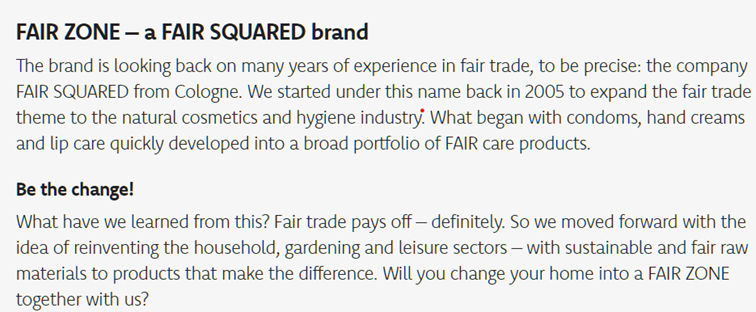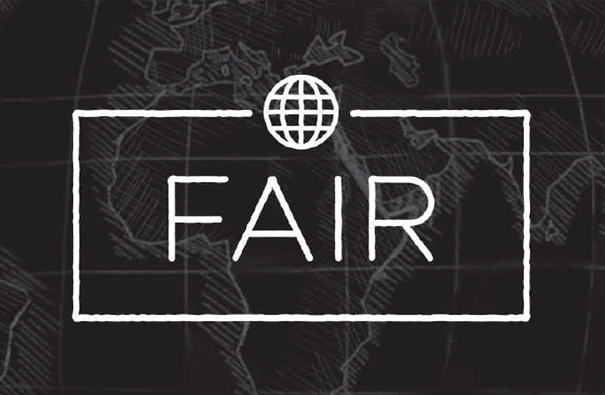Likelihood of confusion with sustainability brand – FAIR ZONE
The case: The ‘FAIR ZONE’ label is particularly well suited as a sustainability brand, isn’t it? After all, it expresses clearly that the marketed products come from fair trade and have been produced sustainably.
Mr Oliver Gothe and Mr Martin Kunz thought so too. In 2017, to expand the range of the companies they run, they registered the word mark

as a Union trade mark, to be used for, among other things, gardening shoes, fitness bands and toys.
They explained their ideas for this in the context of a sophisticated marketing presentation:

ALDI SÜD filed an opposition against the trade mark application, relying on its own EU figurative trade mark registered, inter alia, for identical goods:

But did this ALDI brand pose a threat to the applicants?
No, they said, arguing that the word FAIR could not be protected. The term did not indicate that the protected products came from a particular company. Rather, it only described the origin of sustainable products as from fair trade. Therefore, it must be possible for all companies to use the term, including as a component of a sustainability trade mark. The mere similarity of the marks in the element FAIR did not therefore give rise to a likelihood of confusion.
The Court of Justice of the European Union took a different view.
The ALDI trade mark was fully effective. Its protectability would expire only at the point at which it was finally deleted from the register.
Admittedly, due to the descriptive context, it had, and its component FAIR had, only a low degree of distinctiveness. However, even weak marks with low distinctiveness are protected against likelihood of confusion. An element with a weak distinctive character may even be the dominant element in such a mark and give rise to a likelihood of confusion. This would be the case, for example, if the weak element, by virtue of its position in the sign, by virtue of its size or the subordinate nature of the other elements of the sign, imprinted itself on the consumer’s perception as the trade mark word of a particular undertaking and is memorable.
This was the case with the ALDI mark: the term FAIR is eye-catching due to the size of its letters and its position in the middle of the mark. In contrast, the figurative elements do not characterise the ALDI mark. The descriptive meaning of FAIR is even underlined by the globe, which indicates that the fair-trade products come from global sources. The black background does not characterise the mark either; it is just a common colouring agent.
In the designation FAIR ZONE, the word FAIR was also the decisive element: it appears at the beginning of the sign. However, the beginning of a trade mark is particularly memorable to the public. The other word ZONE also refers only back to the word FAIR. The applicants made this very clear in their advertising: according to them, the products originating from fair trade should make the customer’s home a special zone, a FAIR ZONE with sustainable products.
Since both signs are thus characterised by the word FAIR, there was a likelihood of confusion in view of the identical goods. FAIR ZONE was not registered as a trade mark.
General Court of the European Union, 9 September 2020, T-589/19.
Learnings: As long as an earlier trade mark is registered, it should be taken very seriously in business life. Under certain circumstances, it can destroy your entire market presence and also lead to expensive consequences in other respects. Even a descriptive term contained in the mark can in itself give rise to a likelihood of confusion. Therefore, check very carefully whether your brands – and your valuable marketing surrounding them – are safe from such marks.